So What’s Up with the SOVA? Accessing Digital Air and Space Collections on the Smithsonian Online Virtual Archives
Part of the fun of research is getting elbow deep into the original documents that make up the collections of the National Air and Space Museum Archives. But we also understand that it is difficult for many researchers to make in-person visits to the Archives at the Museum’s Steven F. Udvar-Hazy Center in Chantilly, Virginia. As an alternative, you can experience the NASM Archives (and other Smithsonian collections) anywhere through the Smithsonian Online Virtual Archives (SOVA)!
:focal(500x375:501x376)/https://tf-cmsv2-smithsonianmag-media.s3.amazonaws.com/blogging/featured/Women_Aviation_Overview_0.jpg)
Part of the fun of research is getting elbow deep into the original documents that make up the collections of the National Air and Space Museum Archives. It’s making the connection between a yellow “Votes for Women” rosette and the 19th Amendment, granting women’s suffrage, in the Ruth Law Scrapbook, which is almost the size of a person’s torso. It’s finding a photograph that has been mislabeled for almost thirty years and giving a name and a voice back to Alverna Williams, the first licensed pilot with disabilities. It’s the reality of a 1939 logbook showing that Dale L. White was refused storage at the Morgantown airport because he was black.
But we also understand that it is difficult for many researchers to make in-person visits to the Archives reading rooms at the Museum’s Steven F. Udvar-Hazy Center in Chantilly, Virginia, especially at this time in 2020. Just as you can enjoy many aspects of the Museum from your home via the Air and Space Anywhere page, you can experience the NASM Archives (and other Smithsonian collections) through the Smithsonian Online Virtual Archives, or SOVA for short!
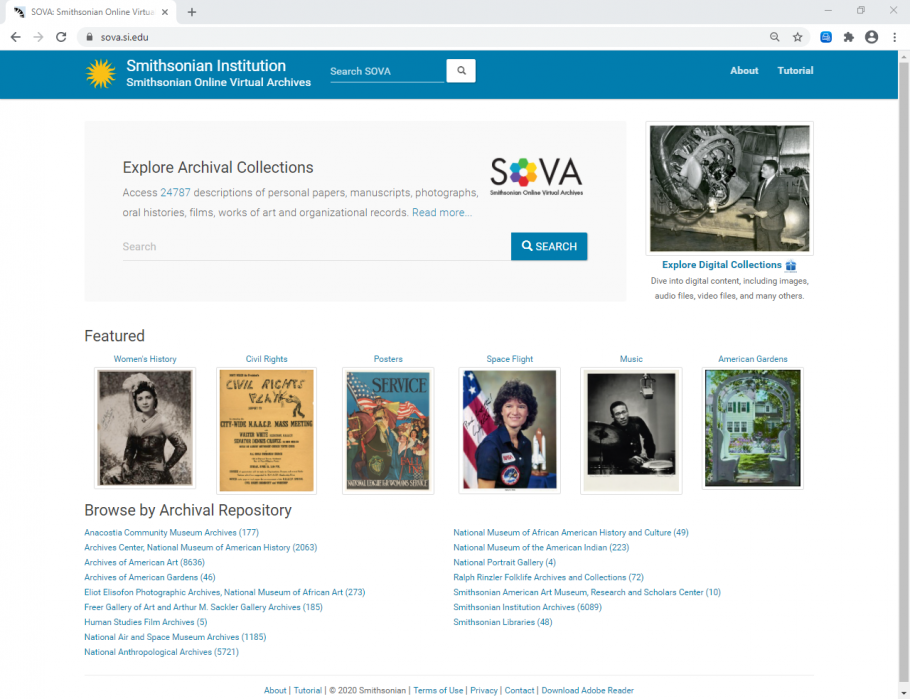
There are plenty of different ways to navigate the SOVA. From the front page you can explore collections of specific Smithsonian repositories, some representing the archival collections of an entire Museum, such as the National Museum of African American History and Culture and the Freer Gallery of Art and Arthur M. Sackler Galleries. Others represent smaller, more specific collections, such the National Anthropological Archives or the Ralph Rinzler Folklife Archives and Collections. The over 6000 collections in the Smithsonian Institution Archives reflect the history of the institution itself. The front page also allows you to view collections by featured subjects, such as Space Flight. Guess what?! Not every space collection is from the National Air and Space Museum.
If you elect to perform your own search, we’d recommend reading through the SOVA tutorial, linked at the bottom of the page. This search engine doesn’t work quite like Google (just to pick one out of the air, so to speak).
Great, let’s try a sample search. A popular topic for many of our researchers is women in aviation. We’re going to use the phrase “women aviation,” but try different word choices--you’ll get different results for “women in aeronautics,” “women in aviation,” and “women aviators.” Our results are large: 267 records over 27 pages. You’ll notice that some of the results have a large blue box icon next to the title. That's the SOVA’s symbol for digitized material (we like to think of it as a gift box, with the gift of digital images!). Since we want to focus on collections with digital assets at the National Air and Space Museum Archives, let’s use the menu on the left of the screen to narrow our search.
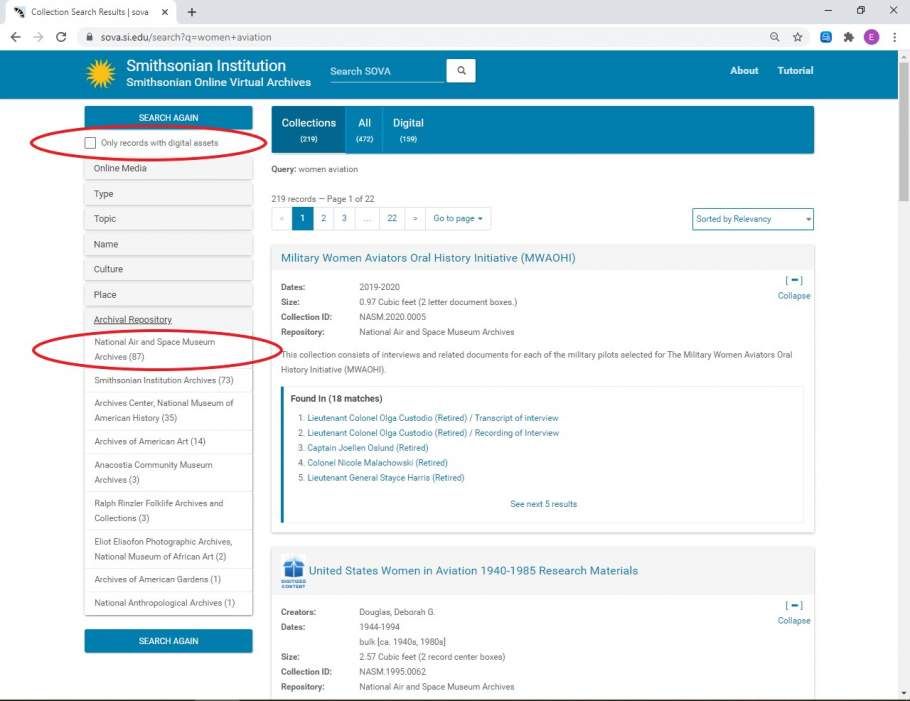
Now we have 42 search results, all with digital material! The search results also show the specific materials within the various collections that contain your search term. We’ll use the first collection “United States Women in Aviation 1940-1985 Research Materials” as our example.
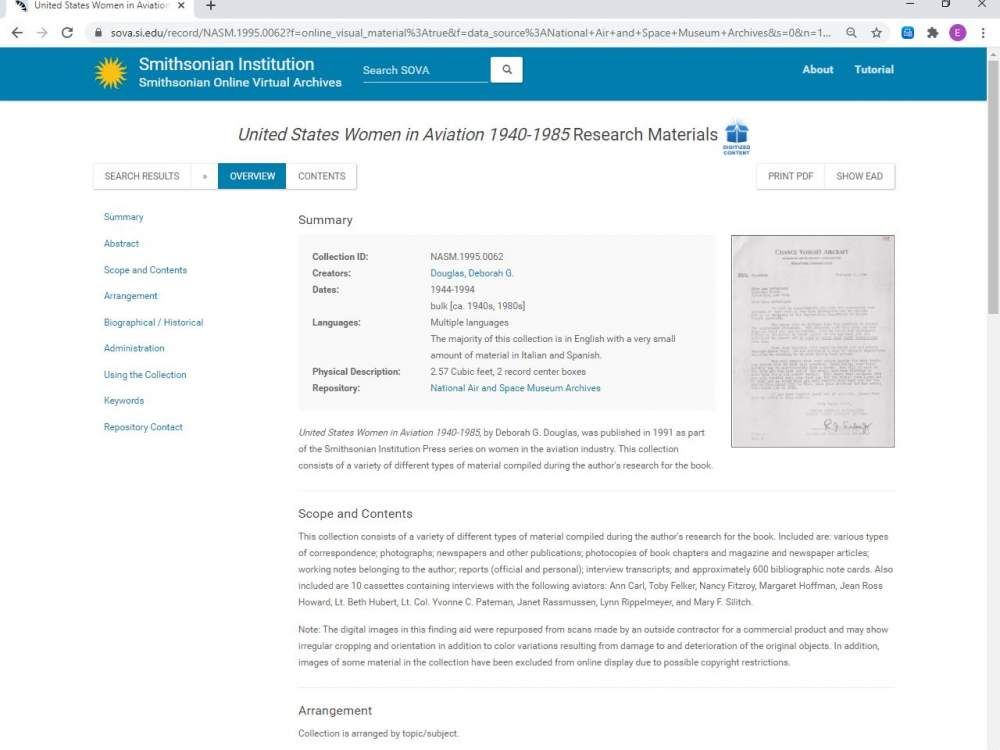
What you’re now looking at is what archivists call a finding aid to a collection. The “Overview” tab provides information such as creator, donor, dates, size, scope and content (what topics are covered) and the arrangement (chronological, alphabetical, etc.) Some collections are small enough that if you click on the image on the right, you’ll get to the entire collection. Others have a “Contents” tab, taking you to what is usually a box and folder listing (if you click on the “print PDF” tab, you’ll get a PDF that combines the overview and contents pages).
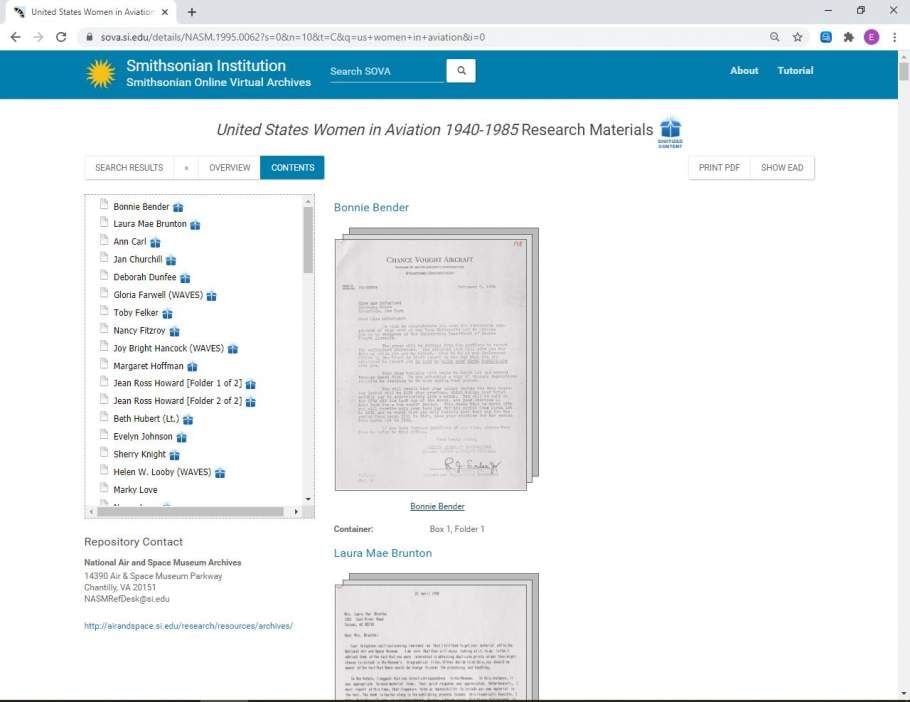
On the "Contents" tab, the left menu bar provides the organization, often a box and folder listing for the collection. The right side expands the listing, often with additional description and an image of the top page of each folder. If you click on the image, you’ll be taken to a slideshow.
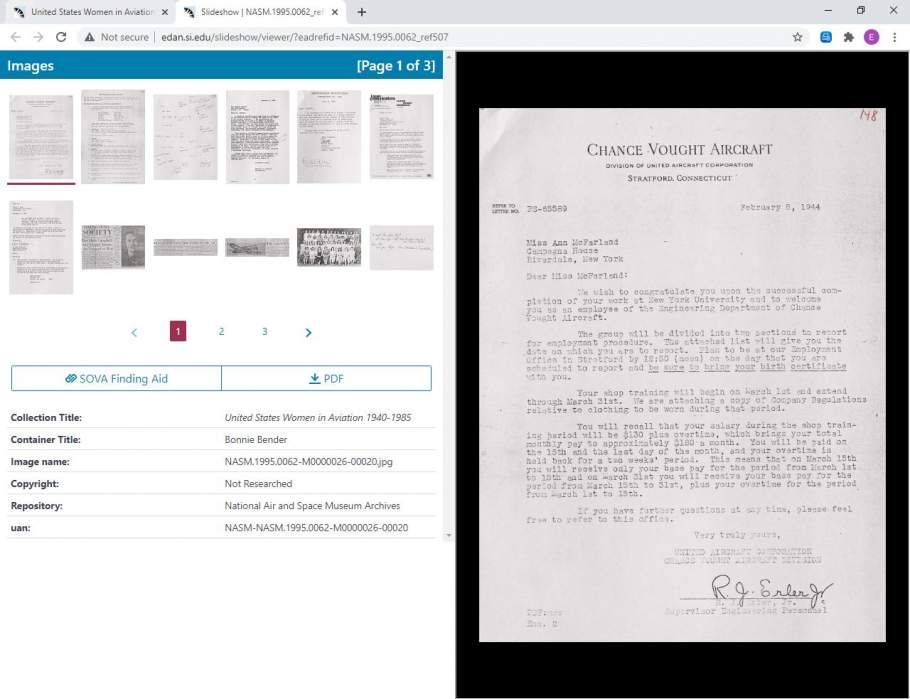
The slideshow offers a page by page view of the folder, with the ability to zoom and flip the image. Some slideshows even have transcriptions of the handwriting or typed text provided by volunteers at the Smithsonian’s Transcription Center.
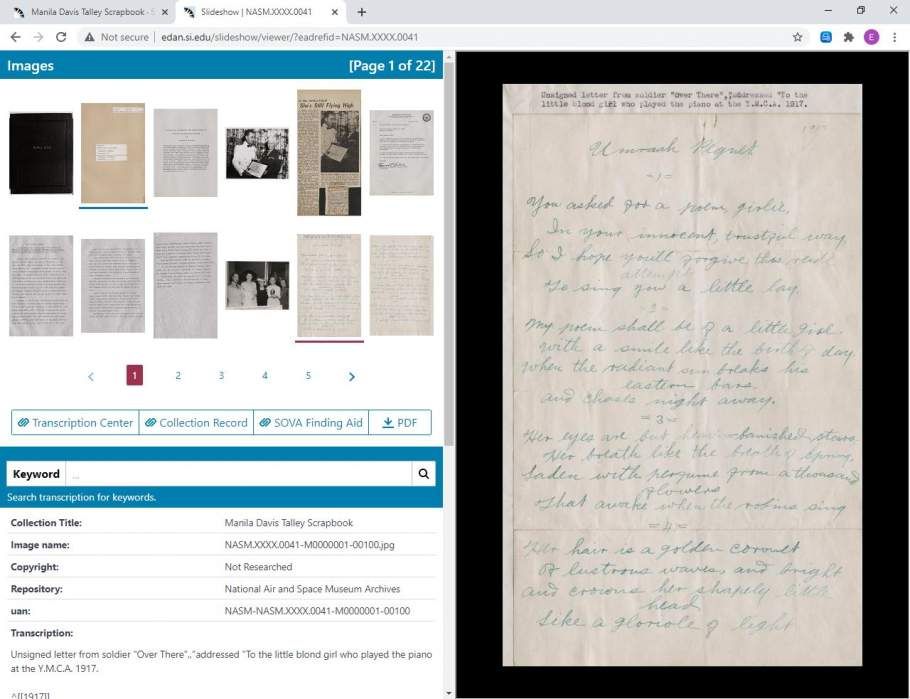
The SOVA also contains audio collections. For example, in the Rand History Project interviews, you can listen to the oral histories conducted with employees of the Rand Corporation, in which they discuss various problems of U.S. national security during the Cold War. The typed transcripts are also available. The United States Space Program Oral History Collection contains selected digitized materials from the space program, including Mercury radio shows and public affairs recordings from the Apollo 11 launch.
There are almost 350 National Air and Space Museum collections with digitized material available in the SOVA. But we do have close to 1200 collection records overall. Some of the collections may only have one or two digital images. Not everything is digitized (our colleagues at the Smithsonian Institution Archives wrote a great post about why digitization is not as quick or as easy as it seems). What do you do if what you want isn’t digitally available in the SOVA or you’re not sure if we even have what you want? You can use our online request form to ask the archivists! We’ll do our best to assist you[*]
So what are you waiting for?! Check out the SOVA!!!
To learn more about how researchers have used the SOVA, watch this What’s New in Aerospace video from the October 2019 Ada Lovelace Women in Wikipedia event. Archivist Elizabeth Borja highlights the Sally K. Ride Papers and our Transcription Center project with the Manila Davis Talley Scrapbook.
October is American Archives Month! You can find postings about our collections and activities by the staff of the National Air and Space Museum Archives.
